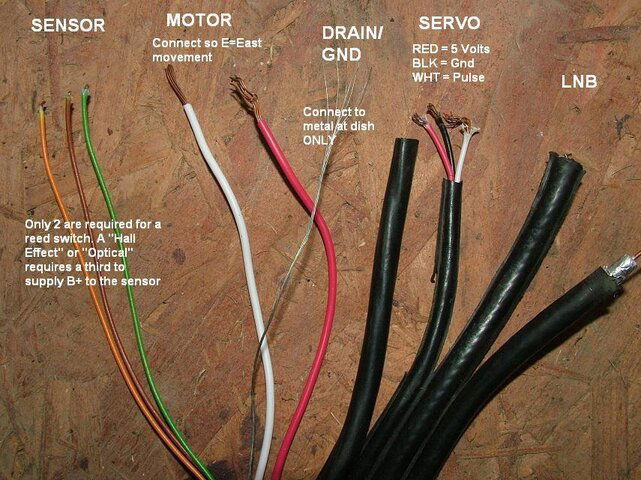Hello,
I am completely new to using satellite dishes to receive television (other than services like DirecTV and DISH). I recently came into control of a local high school AV/headend room. The school is equipped with a large, presumably C-band dish on the roof as well as a much smaller, unlabeled white dish. In the headend room, there is a Chaparral Monterey 100C, as well as a General Instrument DSR-4200V. Nobody left any information on what these tuners were used for or how to operate them; the only thing I could find is that they used to be used to watch a now defunct educational network in MA ("MCET"). Both of these receivers power on and appear to function, but receive no signal. I've gotten as far as the menus that allow you to tune specific frequencies and positions. There is also four coaxial cable connections that come from the roof (I think two from each dish) as well as 2 thick copper wires (powers the dish?) and some smaller copper wires (actuator, polarator?)... that are all disconnected.
My question is this: How can I diagnose what might not be setup with these receivers and what dish to use for what tuner? I would really just like one of them to tune into something. We're not looking for hundreds of channels to watch (Comcast gives us free digital cable), I'm just really interested in seeing if any of this equipment is still useable today. I have fairly decent technical and electrical ability, but as you can likely tell by now, I know absolutely nothing about satellite receivers and dishes. Please let me know if you need more information or pictures.
I am completely new to using satellite dishes to receive television (other than services like DirecTV and DISH). I recently came into control of a local high school AV/headend room. The school is equipped with a large, presumably C-band dish on the roof as well as a much smaller, unlabeled white dish. In the headend room, there is a Chaparral Monterey 100C, as well as a General Instrument DSR-4200V. Nobody left any information on what these tuners were used for or how to operate them; the only thing I could find is that they used to be used to watch a now defunct educational network in MA ("MCET"). Both of these receivers power on and appear to function, but receive no signal. I've gotten as far as the menus that allow you to tune specific frequencies and positions. There is also four coaxial cable connections that come from the roof (I think two from each dish) as well as 2 thick copper wires (powers the dish?) and some smaller copper wires (actuator, polarator?)... that are all disconnected.
My question is this: How can I diagnose what might not be setup with these receivers and what dish to use for what tuner? I would really just like one of them to tune into something. We're not looking for hundreds of channels to watch (Comcast gives us free digital cable), I'm just really interested in seeing if any of this equipment is still useable today. I have fairly decent technical and electrical ability, but as you can likely tell by now, I know absolutely nothing about satellite receivers and dishes. Please let me know if you need more information or pictures.


 to Satelliteguys. You have came to the right place to get your answers.
to Satelliteguys. You have came to the right place to get your answers.
